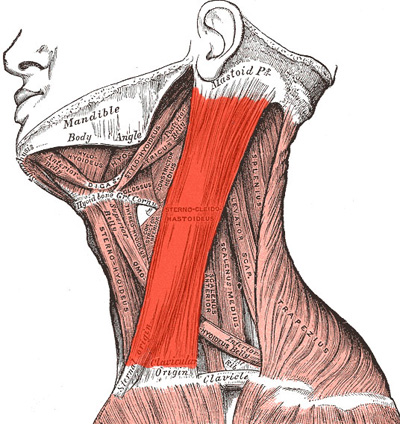sternomastoid muscle

Sternomastoid muscle (red). Source: Gray's Anatomy (1918 ed.)/Wikipedia.
The sternomastoid, also called the sternocleidomastoid, is a long muscle in the neck, extending from the mastoid process of the mastoid bone to the sternum and clavicle. It serves to rotate the neck and head.
Origin and insertion
The sternomastoid originates by a rounded tendon from the upper part of the manubrium (the upper section of the sternum) and by a muscular head from the medial third of the upper surface of the clavicle. The two heads join one another, and the muscle is inserted into the mastoid process and the lateral part of the superior nuchal line of the occipital bone.
Nerve supply
The sternomastoid is supplied by the the spinal part of the accessory nerve and the anterior rami of the second and third cervical nerves. The spinal part of the accessory nerve pierces the deep surface of the muscle and emerges from the its posterior border. The cervical nerves are sensory (proprioceptive).
Action of the sternomastoid
Both muscles (one on each side) acting together extend the head at the atlanto-occipital joint and flex the cervical part of the spinal column.


